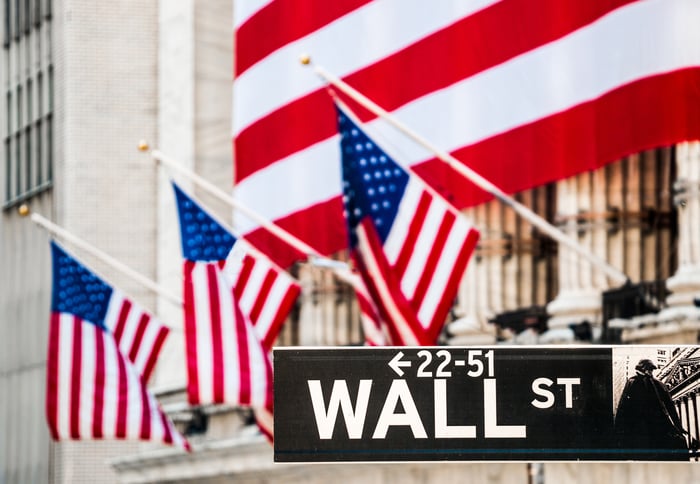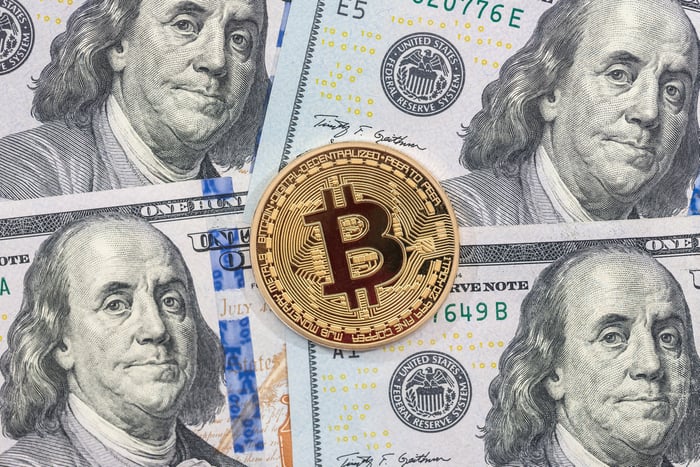For the past couple of weeks, growth stocks and popular momentum plays have hit the skids. History would tell us that all notable declines in the broader market represent opportunities to put our money to work over the long term.
But what happens when those declines occur in risky but popular stocks?
The following five stocks are extremely popular among the investment community, and Wall Street's 12-month consensus price targets for these companies would imply upside ranging from 138% to as much as 216%. The question is: Are these stocks value plays or value traps?

Image source: Getty Images.
Plug Power: Implied upside of 138%
First up is hydrogen fuel-cell solutions provider Plug Power (PLUG -5.17%). Down roughly 70% from its late January high of $75, Plug Power is projected to hit $52, according to Wall Street analysts. If accurate, this would represent upside of 138%, based on the company's closing price on May 13.
This is a company that certainly hasn't lacked for catalysts this year. In less than a week in January, it signed two major partnerships. SK Group took a 10% stake in the company and will work with Plug to develop hydrogen fuel-cell solutions for autos and hydrogen refilling stations in South Korea. Days later, it partnered with French auto company Renault. The duo aims to tackle hydrogen fuel-cell solutions for Europe's commercial light-vehicle market.
Then again, Plug Power has also had its fair share of miscues. For example, the company announced in March that it would have to restate multiple years of its income statements because of an accounting error. Even though this didn't affect the company's cash balance or its gross orders, it clearly shook what's been a momentum-driven stock.
Perhaps the one thing that would make Plug Power a true value is if it can hit the gross billing projection laid out in its recent business update. If the company can hit $1.7 billion in gross billings by 2024 -- a more than tripling of the $475 million expected in 2021 -- it's possible Wall Street's price target becomes a reality.

Image source: Getty Images.
Riot Blockchain: Implied upside of 188%
Cryptocurrency mining company Riot Blockchain (RIOT 10.13%) is also expected to provide some serious upside, according to Wall Street. After tumbling more than 70% from its 52-week high, analysts expect shares to head back to $64. This would imply up to 188% upside over the next year.
Cryptocurrency miners are businesses (or people) that use high-powered computers to solve complex mathematical equations that validate groups of transactions known as a block. For being the first to validate transactions as true, a block reward is paid. Riot specifically focuses on mining Bitcoin (BTC 0.90%). When all of its Antminers are up and running by the end of 2022, it'll have a farm of more than 81,100 miners.
Although this operating model benefits from a higher price for Bitcoin, it's also rife with flaws. The barrier to entry in the mining space is virtually nonexistent, so Riot is set to face increasing competition. At the same time, Bitcoin's block rewards halve every couple of years. Thus, Riot is facing more competition over time for a piece of a shrinking pie.
Riot Blockchain is also entirely dependent on having the price of Bitcoin move higher, rather than on innovation. This situation makes crypto miners like Riot arguably the worst way to invest in Bitcoin.

Image source: Getty Images.
Bionano Genomics: Implied upside of 216%
If you want big-time risk versus reward, Wall Street would encourage you to take a closer look at genome analysis company Bionano Genomics (BNGO -4.73%). The 12-month consensus price target on Bionano is $13.92 a share, which projects up to 216% upside from the $4.41 it closed at on May 13.
The buzz surrounding this former penny stock is the development of its optical genome mapping (OGM) system, known as Saphyr. Late last year, Saphyr demonstrated superior genome detection sensitivity, relative to similar OGM technology from Pacific Biosciences. It was also considerably more cost-effective. A month later, Bionano released a study that identified three autism spectrum disorder risk genes. In short, Bionano's lead device may be able to uncover genetic abnormalities in various hard-to-treat diseases, which would make it easier for drug developers to target these genetic markers.
On the other hand, Bionano Genomics is probably years away from garnering an approval from the U.S. Food and Drug Administration for its device, and third-party licensing is unlikely to generate a lot of revenue. In the first quarter, it recognized just $3.17 million in sales, while losing close to $10 million.
The positive here is that Bionano ended March with $362 million in cash. That should be more than enough to sustain the company's operations for years to come. At this point, its valuation is a crapshoot that's completely dependent on Saphyr's long-term use case.

Image source: Getty Images.
Marathon Digital Holdings: Implied upside of 154%
Another stock with a lot of risk/reward built in is cryptocurrency miner Marathon Digital Holdings (MARA 9.78%). Marathon, which was up by more than 11,000% on a trailing 12-month basis earlier this year, has fallen by 66% since hitting its peak. But if Wall Street is correct, it could rebound to $50 in the next 12 months. That places its upside at 154%.
Similar to Riot Blockchain, Marathon has benefited from a higher Bitcoin price. That means block rewards are worth more, which should send revenue and profits higher.
But there's a key difference as well. Although Marathon and Riot both hang on to the Bitcoin they mine, Marathon invested $150 million directly into Bitcoin in January at an average price of $31,168 per token. When Bitcoin eclipsed $64,000, Marathon was riding a more than $150 million unrealized gain. But with Bitcoin's price stagnating in recent weeks, the 5,292 Bitcoin on its balance sheet have done it no favors.
The big issue with Marathon, like Riot, is that it's entirely reliant on an external input -- Bitcoin -- for success, rather than innovation. When all of its miners are operational, Marathon will have about 22,000 more than Riot. But unless Bitcoin avoids yet another somewhat predictable long-term bear market, this operating model looks to be in serious trouble.

Image source: Getty Images.
Novavax: Implied upside of 138%
Finally, biotech stock Novavax (NVAX 2.06%) is expected to bounce back in a big way. At a closing price of $121 on May 13, it's a mile away from its 52-week high of almost $332. However, Wall Street sees the innovative drug developer rebounding to $288 over the next year. If analysts are correct, that represents upside of up to 138%.
As you might have guessed, Novavax's wild ride is a result of developing a coronavirus disease 2019 (COVID-19) vaccine. This experimental vaccine, NVX-CoV2373, demonstrated 96.4% effectiveness against the original strain of the virus in phase 3 trials in the U.K., and 86.3% efficacy against the U.K. variant. On paper, it looks as if it would have a very good shot at approval in the U.S., U.K., and Europe.
The problem is that the company has encountered numerous delays. It now anticipates filing for emergency-use authorization (EUA) in the third quarter, as opposed to Q2. Perhaps even more worrisome, certain supply shortages could hamper its ability to get to full vaccine production until the fourth quarter. In short, Novavax may miss out on the most lucrative opportunity of the COVID-19 vaccination campaign.
It's tough to say how things will turn out. Novavax does seem to have a quality vaccine, based on the U.K. trial data. But it's unclear where that vaccine will fit in within developed markets. My suspicion is we could see a rebound in its share price, but $288 might be asking a bit much.





